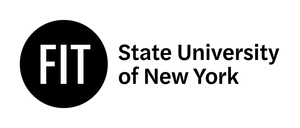Study Focuses on Industry Inclusivity Across Three Realms: Emotional Impact, Economic Consequences, and Social Implications
NEW YORK, June 27, 2024 /PRNewswire/ -- Today, students from the Fashion Institute of Technology's (FIT) master's program in Cosmetics and Fragrance Marketing and Management (CFMM)—hailed as the "Beauty Industry's Think Tank"—unveiled results from "The Future of Accessible Beauty," a comprehensive research study from its 2024 capstone initiative that focuses on consumers who are traditionally overlooked due to physical, emotional, social, or economic limitations. The research was presented at the college, along with an awards ceremony for graduates and a reception for industry professionals sponsored by Shiseido Americas.
"Following the launch this month of The Beauty Center at FIT—a collaborative industry/academic hub for consumer and business research with the beauty industry—we are proud to debut our first global research study that can utilize this new center for industry salons and roundtables that integrate the academic research into industry strategy," said Professor Stephan Kanlian, founder and chair of FIT's Cosmetics and Fragrance Marketing and Management program.
The class of 2024's study aims to elevate industry inclusivity across three pivotal realms: Emotional Impact, Economic Consequences, and Social Implications. It integrates six months of original quantitative and qualitative global consumer research to explore strategies that will help guide organizations through the evolving landscape of beauty and accessibility.
Part One: Emotional Impact
This refers to the emotional impact of inclusivity for people with disabilities on consumer perceptions and organizational culture.
Inclusivity is a powerful movement reshaping the beauty industry, impacting everything from boardrooms to product labs to marketing campaigns. While there have been increasing efforts toward diversity, equity, and inclusion in areas such as skin tone, body type, gender, and age, a significant demographic remains overlooked: the 20% of the global population that identifies as having a disability1. This group advocates for a holistic approach, integrating accessibility into every facet of the beauty experience to truly meet the needs of all consumers. As a group that commands spending power of over $13 trillion2, their inclusion is not only a moral imperative but also a lucrative business opportunity for growth and shifting expectations.
Opportunity: Embracing Diversity and Inclusion
To fully embrace diversity and inclusion, the beauty industry must include people with disabilities—whether neurological, physical, or sensory—in product design, omnichannel sales, and marketing strategies. This will tap into an underserved consumer base and foster brand loyalty. Additionally, meeting the needs of people with disabilities requires a multifaceted approach across all brand functions to be authentic and effective. Developing inclusive workplace policies and educating associates across all functions will create a supportive environment for all people with disabilities, enriching organizational culture and spurring innovation.
Part Two: Economic Consequences of Deserts
The economic consequences of "deserts," and expanding access to fundamental beauty products and services.
Unlocking lasting and equitable economic access lies in addressing an often overlooked challenge: deserts—geographic areas where services or products are unavailable. Today, deserts are a pressing macroeconomic phenomenon affecting consumers across critical sectors. In the United States alone, 121 million consumers live in healthcare deserts3; 54 million live in food deserts4. What deserts exist within beauty? With an industry-first concept of beauty deserts, our mission is to identify the unmet needs of consumers in deserts, create widespread access to fundamental beauty products and services, and reignite our responsibility to serve consumers of all socioeconomic strata.
Opportunity: Expanding Access and Affordability
To address the macroeconomic challenge of deserts, the beauty industry must actively navigate the three factors that define its existence: excessive distance and time spent traveling for beauty products and services, high costs in acquiring these products, and sparse assortment and availability of products that meet key consumer needs. Brands must re-envision their traditional distribution, pricing, and investment strategies to create lasting change, reach overlooked consumers, and solve for this estimated $10 billion opportunity.
Part Three: Social Implications
The social implications at the crossroads of beauty, wellness, and societal norms.
While the beauty industry has long championed women's empowerment, there's a vital yet overlooked area: hormonal health. Despite the wellness market's moves to integrate into beauty, there is a disparity in supporting women's comprehensive hormonal health needs throughout key stages of their lives. From puberty to menopause and beyond, women face a journey fraught with hormonal fluctuations leading to many wellness concerns, yet find scant support. Our mission is to bridge the gap between beauty and wellness by advocating for accessible education, products, and research tailored to women's comprehensive holistic well-being.
Opportunity: Integrating Wellness and Beauty
Integrating wellness and beauty offers the industry a profound opportunity to develop educational initiatives and resources that raise awareness about the impact of hormonal health on beauty and well-being, empowering individuals to make informed choices and prioritize self-care. By considering hormonal health in product development, research, and education, the industry can cater to the unique needs of women across different life stages. Supporting women's holistic well-being through their hormonal changes enables the industry to seamlessly integrate into their lifelong journey, fostering authentic and lasting relationships.
"The capstone research of the FIT Beauty Think Tank provokes discussion and provides a roadmap for future-proofing brands on critical issues of importance to brands and brand leaders, time and time again," said Corey Moran, head of industry–Luxury and Fashion at Google, CFMM adjunct faculty member, and program alumnus. "The research is informed by extensive field work in global markets, interviews with experts from across industry sectors, and original quantitative research with consumers."
"The CFMM field study in India and Singapore offered an unparalleled opportunity to delve into both emerging and established markets," said CFMM 2024 Department Medal Award recipient Maclean Liotta. "This experience broadened our global perspective and provided critical insights that helped shape our capstone research on the future of accessible beauty."
Infographics and white papers are available upon request.
About FIT and the Cosmetics and Fragrance Marketing and Management MPS
The Fashion Institute of Technology (FIT), a part of the State University of New York, has been an internationally recognized leader in career education in design, fashion, business, and technology for more than 75 years. The college offers nearly 50 majors and grants AAS, BFA, BS, MA, MFA, and MPS degrees, preparing students for professional success and leadership in the creative economy. The FIT Master of Professional Studies (MPS) in Cosmetics and Fragrance Marketing and Management (CFMM) program, one of seven advanced degree programs in FIT's School of Graduate Studies, was developed in collaboration with industry as a leadership development program for outstanding mid-career executives. Global luxury firms including Chanel, Estée Lauder, LVMH, and Shiseido, and global consumer packaged goods companies including Coty, L'Oréal and Unilever, nominate talented emerging executives to participate in the two-year program. The CFMM program has become the beauty industry's recognized think tank, producing high-level research presented to industry executives and organizations, and during specialized panels, symposia, and forums in both academia and industry. Visit fitnyc.edu/cfmm. For more information on FIT, visit fitnyc.edu.
About Shiseido Americas
Shiseido Americas Corporation is a subsidiary of Tokyo-based Shiseido Company, Limited, a leading global beauty company. Shiseido Americas' portfolio of prestige beauty brands includes Shiseido, NARS, Clé de Peau Beauté, Drunk Elephant, Dr. Dennis Gross Skincare, Tory Burch Beauty, and several prestige fragrance brands including Issey Miyake and Narciso Rodriguez. Shiseido Americas is headquartered in New York City and employs more than 2,000 individuals in the United States, Canada, and throughout Latin America.
CONTACT
Ivana Cepeda: [email protected], (212) 217-4710
Alexandra Mann: [email protected], (212) 217-4722
1 WGSN Insight Team. (2024, February 2). Lifestyle Strategy: Inclusive Cities. WGSN. Retrieved April 18, 2024, from https://media.wgsn.com.
2 Interbrand. (2021, May). Inclusive Design: The Pursuit of Barrier-Free Brand Experience. Retrieved May 20, 2024, from https://interbrand.com
3 GoodRx Research Team, Nguyen, A., Ph. D., Van Meijgaard, J., Ph. D., Kim, S., MS, & Marsh, T., MPH. (2021). HEALTHCARE DESERTS. In HEALTHCARE DESERTS (p. 2). https://assets.ctfassets.net/4f3rgqwzdznj/1XSl43l40KXMQiJUtl0iIq/ad0070ad4534f9b5776bc2c41091c321/GoodRx_Healthcare_Deserts_White_Paper.pdf
4 USDA ERS - documentation. (2022, October 20). Retrieved June 14, 2024, from https://www.ers.usda.gov/
SOURCE Fashion Institute of Technology

WANT YOUR COMPANY'S NEWS FEATURED ON PRNEWSWIRE.COM?
Newsrooms &
Influencers
Digital Media
Outlets
Journalists
Opted In





Share this article